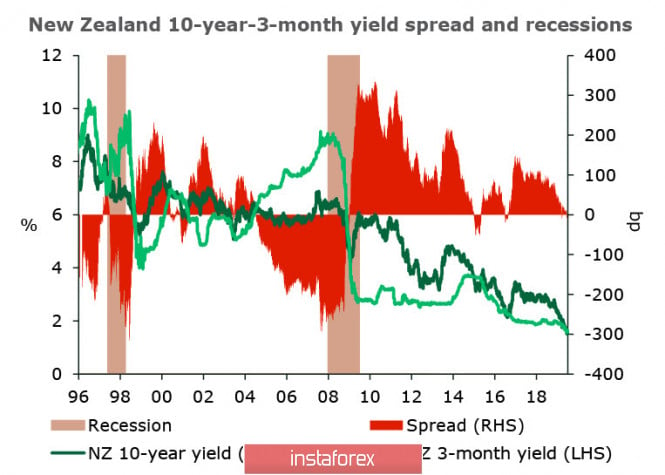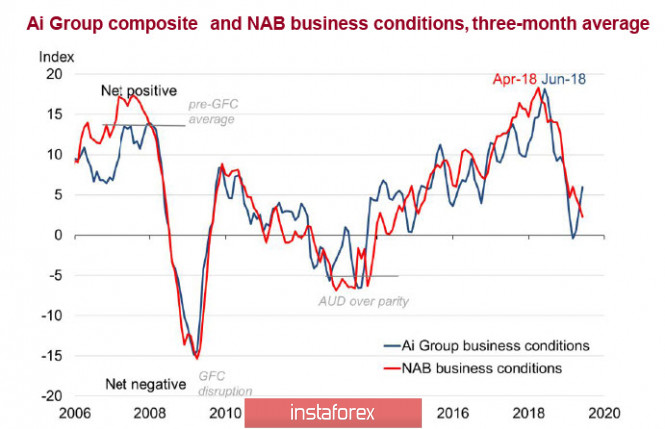The US dollar shows a tendency to weaken at the opening of trading on Monday. Apparently, the dovish rhetoric of Powell in Congress with a simultaneous increase in stock markets and commodity prices have reassured investors. Futures on the S&P 500 updated the record, reaching 3019p on Monday morning and trading above Friday's close indicates positive growth. The Nikkei and the Shanghai Composite started the week with growth, which generally indicates benign sentiment and the stability of commodity currencies.
Data on the economy of China, which was published on Friday and Monday, showed that the Chinese economy has a significant margin of safety amid the protracted trade war with the United States. Despite the fact that the increase in tariffs led to a decrease in exports, the level of business lending remains high and the industrial production in June showed an increase of 6.3%, as well as the retail sales by 9.8%. Both indicators are significantly higher than forecasts. The GDP growth in the 2nd quarter amounted to 1.6% year on year growth of 6.2%, which coincided with expectations. It is obvious that China has a significant reserve for domestic demand, which makes it capable of supporting the growth of the economy of the Middle Kingdom even against the background of a toughening trade war.
NZD/USD pair
The index of business activity in the manufacturing sector of New Zealand continues to balance slightly above 50p to 51.3p compared to growth in June of 0.9p, which is slightly higher than the May level of 50.2p. However, it is significantly below the forecast. Last time, we noted that the slowdown in manufacturing activity in Q2 remained and indeed, activity was below the long-term average of 53.4p for the fourth consecutive month.
The slowdown in the economy and fears of inflationary expectations led the RBNZ to lower interest rates, which immediately affected bond yields, following the US inversion of the yield curve reached New Zealand.

As can be seen from the graph, the inversion does not necessarily end with a recession, unlike in the United States, but it cannot be ignored. The economy of New Zealand significantly depends on the state of the economies of the two main trading partners - the United States and China. Thus, the main risks will still come from external factors. The reduction in the rate of the RBNZ is a consequence of the threat of a slowdown in GDP growth to a lesser extent and a worsening of inflationary expectations to a greater extent. Therefore, the inversion of the yield curve has less attention than a similar indicator in the United States.
For New Zealand, this indicator gives false signals as it was at the end of 2014 and in the middle of 2016. Moreover, the RBNZ is unlikely to pay close attention to inversion. This means that it is hardly correct to expect additional measures to stimulate the economy on the part of the regulator since a number of other equally important indicators do not give cause for concern such as financial conditions with a decrease in the RBNZ rate and the NZD rate have improved. There were also fears about a fall in household income that was not yet confirmed. Nonetheless, the budget is stable and the planned increase in spending will have a positive impact on inflation.
In general, the picture for kiwi continues to remain neutral. The RBNZ will monitor the Fed's actions and the markets are ready for two rate cuts in August and November, but there is no reason for a deep decline in NZD/USD pair. The dollar looks weak and a resistance test at 0.6720 is likely. Growth will continue to the border of the channel 0.6805/15.
AUD/USD pair
A number of indicators last week indicates a downward trend in economic confidence, particularly the NAB business confidence index dropped by 5 points in June and is below the long-term average, as well as the Westpac-Melbourne Institute's consumer sentiment index dropped to 96.5p, which indicates an increase in pessimism. Also, the ANZ consumer confidence index of Roy Morgan fell by 1.1% in the first week of July.

At the same time, these trends do not cause much concern as inflationary expectations remain high. They are based on the fact that the minimum wage in Australia as of 2018 was the highest in the world.
Aussie goes in a general positive flow as the week will start with its growth. The AUD/USD pair will move towards a strong resistance of 0.72 and support of 0.6965, but there is little reason to decline.
The material has been provided by InstaForex Company - www.instaforex.com